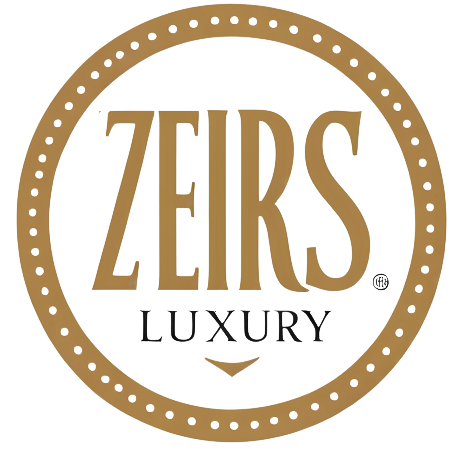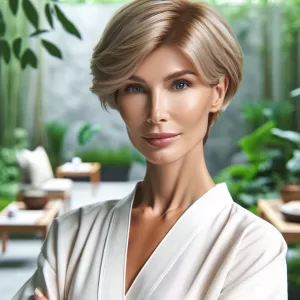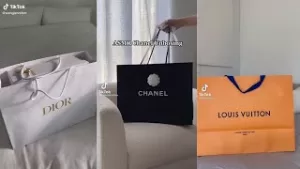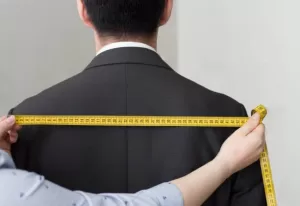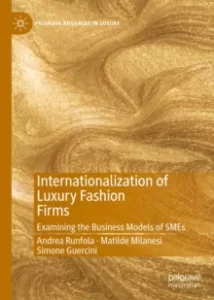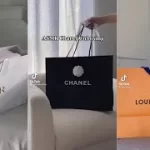
Introduction to Sustainable High Fashion
As a passionate advocate for sustainable luxury, I’ve observed the emerging trends within the high fashion industry with great interest. My engagement in textile networking has offered me a unique vantage point from which to witness this seismic shift—the transition towards a sustainable future in the luxury fashion sector. Here, I will outline the strides we are making in integrating sustainable practices into the heart of luxury fashion, redefining the ethos of what it means to be glamorous in an eco-conscious world.
Understanding Sustainable High Fashion
Sustainable high fashion is not merely a fleeting trend; it is the evolution of luxury fashion metamorphosing to adapt to the urgent needs of our planet. It involves:
– **Materials and Fabrication:** The use of organic, recycled, or bio-based materials is becoming increasingly commonplace as alternatives to conventional textiles. From organic cotton to regenerative wool, these materials are cultivated and sourced with minimal environmental impact.
– **Ethical Production:** There’s a discernible shift towards ethical production practices ensuring fair wages, safe working conditions, and rights for all workers throughout the supply chain.
– **Circularity:** We are moving towards a more circular economy, where the end of life for a garment is as important as its inception. This includes designing for longevity, recycling, and a focus on garment aftercare.
– **Transparency:** Luxury brands are championing transparency, enabling consumers to trace the journey of their products from raw materials to final creations.
The Emergence of a New Era in Luxury Fashion
Today, we are experiencing the dawn of a new paradigm in luxury fashion. This is characterized by:
– **Innovation and Technology:** From 3D printing to AI-driven designs, technology is enabling more sustainable manufacturing processes and innovative designs that reduce waste.
– **Artisanal and Slow Fashion:** There’s a revival of handmade, artisanal craft techniques that emphasize quality, skill, and timeless design over mass production.
– **Collaborative Efforts:** The industry is witnessing an unprecedented collective effort among luxury brands. Initiatives like the Fashion Pact are bringing together the biggest names in fashion to set tangible targets for reducing environmental impact.
– **Consumer Consciousness:** Luxury consumers are increasingly informed, demanding products that align with their values. Brands are responding with designs that do not compromise on aesthetics or quality, while being kind to the planet.
In my professional capacity, I’ve had the privilege of being part of this transformation. It’s an exhilarating time to be in fashion, particularly at the nexus of luxury and sustainability, where each step we take is a step towards a more responsible and vibrant future. Through panels, forums, and my own role in the textile network community, I am committed to fostering this conversation, contributing to a world where the opulence of luxury fashion is synonymous with environmental stewardship and ethical integrity.
The Evolution of Eco-Conscious Design
As a professional deeply entrenched in the world of luxury sustainable fashion, I’ve witnessed a metamorphosis that’s both inspiring and telling of the times we live in. What was once considered niche or unconventional in the realm of high fashion has now burgeoned into an all-embracing movement. Let’s delve into the remarkable journey and the textures of change shaping this industry.
From Natural Fibres to Cutting-edge Innovation
– **Natural Materials**: My career began at a time when sustainable fashion largely revolved around natural fibers such as organic cotton, linen, and bamboo. While these materials are still invaluable, they represented the extent of eco-friendly options for many years.
– **Technological Advancements**: The fusion of sustainability with technology has ushered in dramatic progress. Bio-fabrics and materials synthesized from recycled plastics are charting a new course for eco-conscious design.
– **Cruelty-Free Production**: Further, the integration of cruelty-free processes and plant-based leathers has been revolutionary, aligning the luxury sector with ethical consumer demands.
– **Minimal Impact Processes**: Reducing water usage, investing in renewable energy, and adopting low-impact dyeing techniques are other significant advancements. These processes not only preserve the environment but also fortify the commitment to responsible luxury.
Sustainability is no longer an afterthought or a marketing gimmick. It is woven into the very blueprint of contemporary luxury fashion. As I collaborate with burgeoning designers and iconic brands, I see an invigorating dedication to sustainability at every level.
How Sustainable Fashion Is Redefining Luxury
– **Expressive Designs**: Gone are the days when eco-friendly meant compromising on style. Today’s designers are bending the rules, crafting collections that are both expressive and sustainable.
– **Individualistic Approach**: Luxury now is about singularity and authenticity. Designers are tailoring their work to reflect unique stories, connecting wearers to their clothes on a personal level.
– **Accessibility**: Pioneering retailers are spotlighting sustainable brands, making them more accessible. This not only boosts the profiles of emerging designers but also makes sustainable luxury a viable choice for a broader audience.
– **Transformative Impact**: The synergistic impact of these efforts is transformative. It’s a true reinvention of luxury where the opulent appeal melds seamlessly with ecological responsibility.
As a professional, this progression isn’t just fascinating; it’s a call to action. My role is to continue pushing for innovation, to bridge the gap between the lure of the new and the longevity of the sustainable. It’s a balance that must be struck with precision in the luxury market, where the discerning eyes of customers are now as focused on ethical practices as they are on elegance. In my view, we’re not on the brink of change – we are in the midst of its very unfolding.
It’s imperative we understand that the luxury sustainable fashion movement is more than a trend – it is the herald of a new era where opulence and conscientious living don’t just coexist, they synergize. This is the essence of the evolution that’s currently sculpting the contours of the luxury fashion industry.
The Role of Brands in Sustainable Luxury Fashion
In my professional journey through the dynamic world of fashion, I have observed firsthand how luxury brands are not merely shifting but are also eagerly leading the charge toward sustainable practices in fashion. Their role in championing this cause is pivotal, and their influence resonates throughout the industry.
Brands at the Forefront of the Sustainable Movement
Luxury brands hold a unique power to set trends and define standards. Here are some key points on how they are using this influence to promote sustainability:
– **Innovative Material Use**: Brands like Loro Piana, with their long-standing heritage, are exploring innovative materials such as recycled cashmere and certified wool to blend sustainability with maximum comfort.
– **Eco-conscious Collections**: Dior’s commitment is evident in its eco-designed collections, which aim at reducing environmental impact while maintaining the brand’s prestigious aesthetic.
– **Green Manufacturing**: Ermenegildo Zegna’s #UseTheExisting initiative stands out as it incorporates pre-existing and sustainable materials into new collections, thus pioneering in the sustainable luxury fashion segment.
– **Circular Design Philosophy**: Brands such as Valentino are embracing a circular design philosophy. By prioritizing recyclable and reusable materials, these brands ensure the longevity of their items.
– **Packaging and Supply Chain Transparency**: Luxury brands, including Chanel and Salvatore Ferragamo, are making significant investments in eco-friendly packaging and taking strides toward greater supply chain transparency.
– **Craftsmanship and Durability**: Beyond materials and production, luxury brands are emphasizing the timeless quality of craftsmanship and durability, de-emphasizing disposable culture and investing in creating pieces that stand the test of time.
Collaboration between Luxury and Responsibility
The symbiosis between luxury brands and sustainable initiatives creates a powerful platform for change. Here’s how collaboration plays a vital role:
– **Consumer Dialogue**: Luxury brands are engaging in an ongoing dialogue with consumers, learning from their expectations and educating them about the environmental benefits of sustainable purchases.
– **Industry Alliances**: There is a growing trend of industry alliances, where luxury brands come together to develop and adopt shared eco-friendly standards.
– **Support for Innovation**: Forward-thinking brands are investing in sustainable startups and technologies, showcasing their support for innovation in textiles and production methods.
– **Philanthropy and Advocacy**: Engaging in philanthropic efforts and advocating for policy changes are key aspects of how luxury brands are contributing to a larger cultural shift toward environmental stewardship.
– **Empowering Artisans and Communities**: By partnering with artisans and local communities, luxury brands are ensuring fair trade practices and cultivating the growth of ethical supply chains.
In my role, I am privileged to witness and be part of crafting a narrative where luxury fashion brands are not just adapting to sustainability, but actively shaping it. These brands have come to understand that their legacies will be judged not only by the timeless beauty of their creations but equally by the integrity and foresight with which they steward our planet’s resources. They play an integral role in reinforcing that the truest form of luxury lies in its ability to exist in harmony with the world around us.
Sustainable Materials in High Fashion
In my career, the vanguard of high fashion’s transformation has been the innovative use of sustainable materials. These materials are quickly becoming as lavish and desirable as their conventional counterparts, reshaping the landscape of luxury fashion.
Advancements in Eco-friendly Fabrics
– **Bio-based Materials**: I’ve been particularly impressed with the progress in bio-based materials, which mimic traditional textiles while reducing environmental impact. From mushroom leather to spider silk fabrics, these innovations are redefining sustainable luxury.
– **Recycling with Pizzazz**: The upscale recycling of materials once deemed unusable has also caught my eye. Cashmere repurposed from old garments and a renewed interest in artisanal methods that prevent waste have been stellar.
– **Water Conservation**: As professionals, we’re constantly seeking ways to conserve resources. Fabrics that require less water in their production are gaining traction, aligning with luxury brands’ sustainability goals.
– **Energy Efficiency**: Utilizing materials produced with renewable energy sources is another focus area. The carbon footprint of production is a significant concern, and materials produced efficiently address this aspect head-on.
As I steep myself further into the realms of textile innovation, I witness a growing trend of materials that not only serve aesthetic purposes but also tell tales of environmental stewardship.
Luxury Fashion Meets Environmental Ethics
– **Collaborative Efforts**: The intersection of luxury fashion and environmental ethics is seen through collaborative efforts. Partnerships between tech companies and fashion houses are pioneering new textiles that push ethical boundaries.
– **Traceability**: Another area where luxury fashion intersects with ethics is in supply chain transparency. Consumers are increasingly informed and demand to know the origin of their garments. This shift pushes the industry towards greater accountability.
– **Sustainable Certifications**: Amidst the multitude of eco-friendly claims, third-party certifications offer objective measures of sustainability. I’ve seen how brands that achieve such certifications gain the trust of environmentally-conscious consumers.
– **Cultural Shift**: Lastly, I recognize the cultural shift in luxury fashion towards embracing and celebrating environmentally-ethical practices. This narrative shift is as pivotal as the material innovations themselves.
In my professional view, the luxury fashion industry is experiencing a renaissance—a merging of opulence with ecological accountability. This fusion is not just a passing trend but the blueprint for the future of fashion. As a key player in this industry, I understand that my role extends beyond the creation of luxury garments; it encompasses a responsibility to the environment and future generations. The legacy we craft today with sustainable materials in high fashion will dictate the ethos of tomorrow’s luxury landscape.
Ethical Production and Supply Chains
In my extensive experience within the fashion industry, I’ve observed a significant shift towards ethical production and responsible supply chains. This paradigm shift is not only a response to a more conscientious consumer base but is also driven by designers and brands with foresight and a commitment to ethical standards.
Prioritizing Moral Business Practices
– **Small Batch Production**: In my role, I have encouraged and adopted small batch production models to reduce waste and improve quality control. This approach allows for more personalized, attentive craftsmanship, and significantly lessens the environmental footprint of manufacturing.
– **Upcycling Initiatives**: As a proponent of innovative practices, I have overseen upcycling initiatives that transform deadstock fabrics into new, luxurious creations. This not only minimizes textile waste but also injects unpredictable creativity into the design process.
– **Ethically Sourced Materials**: I’ve forged relationships with suppliers who share a vision for a more responsible fashion industry, ensuring that the materials we use are ethically sourced. The traceability of materials from fiber to final product is a priority, as is supporting fair labor practices along the way.
– **Local Artisan Support**: Supporting local artisans and ancient crafting techniques has been an integral part of my strategy, helping preserve cultural heritage while contributing to local economies. By doing so, we keep traditional skills alive and ensure a fair wage for these skilled workers.
Through my endeavors, I have come to realize that successful luxury brands of the future will not just be judged by aesthetics but by their moral compass, and their ability to innovate responsibly and inclusively.
Transparency and Accountability in High Fashion
– **Open Dialogue with Consumers**: Embracing transparency, I’ve initiated an open dialogue with consumers regarding our manufacturing processes and sourcing. Educating customers about the lifecycle of products promotes a more responsible consumption pattern.
– **Supply Chain Disclosures**: I have worked towards greater supply chain disclosures, providing consumers with the necessary information to make informed decisions—further bridging the gap between luxury and ethical consumption.
– **Investing in Technology**: Investing in cutting-edge technology has allowed us to track our supply chain with greater accuracy, identifying any potential ethical weak points and addressing them swiftly. Advanced analytics and blockchain technology are some of the tools we utilize.
– **Continuous Improvement**: The quest for ethical perfection is ongoing. I am a firm believer in continuous improvement and regularly review our supply chain and production practices to identify areas where we can become more sustainable, equitable, and ethical.
In summary, my professional journey mirrors the evolution of luxury fashion — a journey from mere opulence to one that carries a conscience. Each day presents an opportunity to further merge environmental and ethical considerations with the time-honored tradition of creating high fashion.
Designer Spotlight: Pioneers of Sustainable Luxury Fashion
In the ever-evolving sphere of high fashion, certain designers stand out not only for their artistic ingenuity but also for their dedication to the environment. My experience has introduced me to an illustrious cadre of fashion pioneers who have intricately woven sustainability into the fabric of luxury.
Profile of Sustainable Fashion Designers
– **Visionaries with a Mission**: Among these designers are visionaries who have made it their mission to challenge the status quo. Working with novel materials, they set new standards for what it means to be both opulent and ecologically responsible.
– **Heritage and Innovation**: These creators respect the heritage of high fashion while simultaneously innovating. My interactions with such designers reveal a deep commitment to upholding tradition, along with a fearless embrace of modern sustainable technologies.
– **Design Philosophy**: For these innovative individuals, the design philosophy extends beyond aesthetics. It encompasses a comprehensive approach that considers the garment’s lifecycle, advocating for reduced waste and longevity in wear.
– **Influential Collaborators**: Moreover, these designers often serve as influential collaborators, pushing major luxury brands to adopt greener practices. Their influence is far-reaching, impacting industry standards and consumer expectations alike.
These designers are not just creators of fashion; they are architects of change, pioneering a movement that respects both artistry and the environment.
Case Studies: Success Stories in Sustainable High Fashion
– **Loro Piana**: An example is Loro Piana, which has seamlessly incorporated sustainability into its luxury offerings. Through my professional interactions, I’ve noted their investment in sustainable cashmere and wool, setting an industry benchmark for ethical sourcing.
– **Ermenegildo Zegna**: Another success story is Ermenegildo Zegna, with its innovative UseTheExisting™ concept. They’ve redefined fashion’s relationship with waste, transforming pre-existing materials into premium attire while maintaining their signature sartorial excellence.
– **Valentino**: Valentino, in its quest for sustainability, has fostered partnerships focused on responsible fabric production. Their efforts in sourcing traceable materials for their iconic designs showcase a harmony between high style and high ethics.
– **Chanel with a Conscience**: Chanel, a stalwart of luxury, has not shied away from sustainable advancements. Their integration of eco-friendly practices into the production cycle illustrates a commitment to a greener fashion future without compromising on their timeless appeal.
– **Salvatore Ferragamo**: Salvatore Ferragamo’s creative experiments with materials like orange fiber and grape leather highlight the brand’s dedication to innovation. These initiatives not only exude luxury but also showcase their pioneering spirit in sustainable fashion.
My observations and experiences within the industry affirm that these success stories are not mere outliers—they are the vanguard of a new era. They serve as both inspiration and motivation for all players within the fashion sector to take heed and follow suit. It’s a stirring testament to what is possible when creativity and sustainability converge, guiding us toward a future where fashion is as kind to the planet as it is to the eye.
Consumer Responsibility and Engagement
As I delve deeper into the world of sustainable luxury fashion, I recognize that the transformation is not solely driven by innovative designers and environmentally-conscious brands. A significant portion of this positive change is fueled by the consumer – individuals like you and me, making informed decisions about where to spend our money and which brands to support. Our power to influence the fashion landscape through our purchasing choices is immense, and as a professional with a keen interest in sustainable practices, I’ve noticed a surge in consumers leveraging this power.
The Power of Informed Purchases
– **Education Enhances Choice**: Educating ourselves about the origins, materials, and production processes of our clothing empowers us to make choices that align with our values. I’ve seen an uptick in shoppers who scrutinize product tags, question brand ethics, and prioritize longevity over fast-fashion disposability.
– **Sustainability Rating Platforms**: Tools and platforms offering sustainability ratings are gaining popularity. These resources enable shoppers like us to evaluate brands’ environmental footprints before committing to a purchase. I often leverage these platforms to guide my own buying decisions and recommend them to others seeking similar information.
– **Influence Through Expenditure**: It’s crucial to understand that every purchase is a vote for the type of fashion industry we want. By opting for sustainably made garments, we send a clear message to brands that there is a demand for eco-conscious products. Observing this consumer demand firsthand has underscored to me just how potent informed purchases can be.
Building a Community Around Eco-conscious Style
– **Social Media Advocacy**: The rise of social media has fostered a vibrant community of eco-friendly fashion enthusiasts. Sharing experiences, insights, and sustainable fashion finds online, consumers create a collective voice that champions ethical fashion. As part of this online community, I’ve witnessed the power of united individuals advocating for change.
– **Fashion Forums and Events**: Engaging in fashion forums and attending sustainable fashion events are ways we can immerse ourselves in the conversation and contribute to the movement. These forums are rich with knowledge exchange, and participating in them has broadened my understanding of the intricacies of sustainable fashion models.
– **Supporting Conscious Creators**: Conscious consumers actively seek and support smaller, independent designers committed to sustainability. This support is vital for these creators, and I take pride in amplifying their work through my networks. It’s a symbiotic relationship that encourages innovation and ethical practices in equal measure.
My professional journey and personal dedication to sustainable luxury fashion have made it clear that real change is a collaborative endeavor. It requires the commitment of designers, brands, and consumers alike, with each group playing a crucial role in shaping the industry’s future. The choices we make as consumers are not just about personal style; they’re powerful statements about the kind of world we want to live in—and the kind of fashion industry we want to see thrive.
The Future of Sustainable High Fashion
Predictions for the Progress of Eco-Friendly Design
Through my lens as a fashion industry professional, it is evident that the future of high fashion is intrinsically linked to sustainability. Here are a few predictions I foresee for the eco-friendly design movement:
– **Integration of Biodegradable Materials**: We will see an increased use of biodegradable fabrics that redefine luxury apparel. These materials, which decompose naturally without harming the environment, will become staples in the collections of the most revered fashion houses.
– **Technological Innovations**: Cutting-edge technology will play a pivotal role, with developments in fabric recycling and 3D printing taking center stage. Such advancements will allow designers to craft exquisite garments with a significantly reduced environmental footprint.
– **Transparency in Supply Chains**: Consumers are becoming more environmentally conscientious, and they demand transparency. The future will see fashion brands offering more in-depth insight into their supply chain, ensuring the materials and labor involved align with ethical and ecological benchmarks.
– **Eco-Certifications as Standard**: Certification systems like Global Organic Textile Standard (GOTS) and OEKO-TEX will be commonplace, guiding consumers in their purchasing decisions and offering assurance of a product’s sustainable credentials.
As we progress, these predictions may very well become the new normal, as the industry continues to evolve with conscientiousness at its core.
Challenges and Opportunities Ahead
With the momentum towards a more sustainable fashion industry, challenges are inevitable, yet they present unique opportunities:
– **Balancing Craftsmanship and Sustainability**: One significant challenge is sustaining the level of artistry and craftsmanship expected from luxury brands while adhering to green practices. It is an opportunity to innovate and elevate handcrafting techniques that have a lower environmental impact.
– **Cost Implications**: Eco-friendly materials and ethical labor practices often incur higher costs, which may be passed onto the consumer. However, this presents an opportunity for luxury brands to lead the way in showing that consumers are willing to invest in products that support the health of our planet.
– **Educating Consumers**: There remains an educational curve to inform consumers about the importance of sustainability in fashion. It offers an opportunity for brands to engage deeply with their audience, building loyalty through shared values and education about the long-term benefits of sustainable luxury.
– **Regulatory Environment**: The likely increase in environmental regulations presents a compliance challenge but equally an opportunity for brands to be proactive, exceeding standards and setting an example for environmental stewardship.
In my professional journey, the intersection of luxury and sustainability has revealed itself as a rich tapestry of potential. It’s a sector ripe with innovation, imbued with the promise of delivering glamour responsibly. As such, the dialogue between luxury fashion and sustainability not only raises the bar but also sets a new, sustainable course for an industry at the pinnacle of creativity and influence.
Reflecting on the Sustainability Revolution in Luxury Fashion
The Emergence of Green Glamour
In my tenure within the luxury fashion sector, I’ve witnessed firsthand a remarkable evolution. As an industry insider, I’ve seen the shift toward sustainable practices become central to the narrative of contemporary luxury. This transition is not merely about environmental compliance but represents a holistic transformation affecting materials, processes, and the very ethos of design houses. Let me share insights from my experience:
– **Adoption of Organic and Recycled Fabrics**: There’s been a discernible surge in the use of organic and recycled materials. I’ve seen brands that once relied exclusively on traditional textiles now proudly showcasing collections made from organic cotton and recycled polyester.
– **Innovative Dyeing Techniques**: Water pollution has long been an industry issue, and in my role, I’ve observed a significant push towards innovative dyeing techniques that considerably reduce water usage and eliminate harmful chemicals.
– **Rethinking Packaging**: Luxury fashion is often associated with lavish packaging, but there’s a movement underway to rethink these practices. From using recycled materials for boxes to adopting reusable fabric dust bags, these small changes contribute significantly to sustainability goals.
– **Design for Longevity**: A confluence of art and ethics is happening through design for longevity. More and more, I’ve seen designs that are timeless rather than trend-driven, ensuring a longer life cycle for each garment.
Collaboration in the Name of Sustainability
– **Material Science Partnerships**: One of the most promising advancements I’ve encountered is the collaboration between luxury brands and material scientists. Together, we’re exploring new frontiers with bio-fabricated materials and repurposed fibers.
– **Unified Industry Standards**: As part of a collective effort, I’ve participated in dialogues aiming to establish unified industry standards for sustainability, making it easier for consumers to understand and trust the products they buy.
– **Cross-Sector Initiatives**: I’ve also seen powerful cross-sector initiatives where luxury brands partner with non-profits and governmental agencies to promote sustainability both in production and at the consumer level.
This journey through the changing landscape of luxury fashion tells a story of introspection and action. For those of us within the industry, it’s clear that the ethos of luxury is evolving to include responsibility and reverence for the resources from which our creations are born. Our collective efforts signal a commitment not just to talk about sustainability but to integrate it directly into our lifestyles and our brands. It’s a shift that embraces a future where glamour and eco-consciousness coexist, taking luxury fashion into a progressive and more conscientious era.
